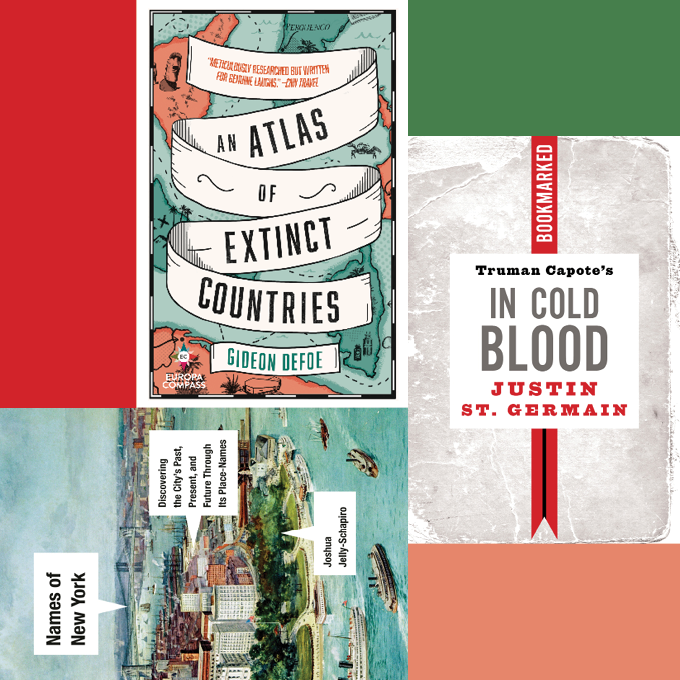Ah, to live in the days when to get away from it all you could fly to the Tangier International Zone, at the very top of Africa and only 20 miles from Spain, and hang out with spies and smugglers, with Barbara Hutton (who would phone the U.S. consul to gripe about the taste of the Coca-Cola sold there) and Ian Fleming and Matisse and T. S. Eliot. (Now that’s a dinner party you won’t see mentioned in the New York Times feature “By the Book.”)
The zone, which lasted from 1924 until 1956, when it became part of Morocco, is one of 48 countries that no longer exist, all detailed in irreverent and rollicking style by Gideon Defoe. In what expired country was the currency cowrie shells? (Dahomey, now Benin.) Where was the Great Republic of Rough and Ready? (In California, and it lasted from April 7 to July 4, 1850, when its citizens discovered they could not buy booze in a neighboring town because they were now deemed foreigners and so they dissolved their nation.) And don’t forget the Free State of Bottleneck, accidentally created in 1919 when an imprecise rendering of occupied zones in Germany after World War I resulted in an orphaned population of 17,000. For four glorious years Bottleneck ruled, until France pocketed it.
This is a deeply compelling book, part memoir, part deconstruction of Truman Capote’s classic murder story, part meditation on what it means to interpret the lives of the dead. Justin St. Germain’s mother was shot to death by her fifth husband when her son was 20, and this tragedy produced his first book, Son of a Gun, published to high acclaim but low sales in 2013. In this volume, part of Ig Publishing’s “Bookmarked” series, in which authors excavate well-known books, St. Germain dissects In Cold Blood with a savage scalpel, showing what was tricky and fraudulent about the account of the Clutter-family murders and why it nonetheless obsessed him so much that he visited Kansas to sightsee the victims’ graves and former home. St. Germain feels a bit ashamed for having done so, realizing that those who are murdered and then written about can suffer violence twice over.
You don’t need to know the difference between Sixth Avenue and the Avenue of the Americas (hint: there is no difference, and only Donald Trump and the pompous use of the latter term) to enjoy this nifty book. From the Bronx neighborhood with avenues named Cicero, Caesar, and Virgil to the marshes in Jamaica Bay you fly over when landing at J.F.K. (Old Sawale, Pumpkin Patch, and the Raunt are just three of the many), Joshua Jelly-Schapiro (and how about that name!) is a cheerful guide to the history of New York City as seen through its streets, plazas, memorials, you name it. My favorite is in Jackson Heights: 35T1H4 A1V4E1N1U1E1, so numbered because it is here, during the Depression, that Alfred Musher Butts invented the game that became Scrabble.

